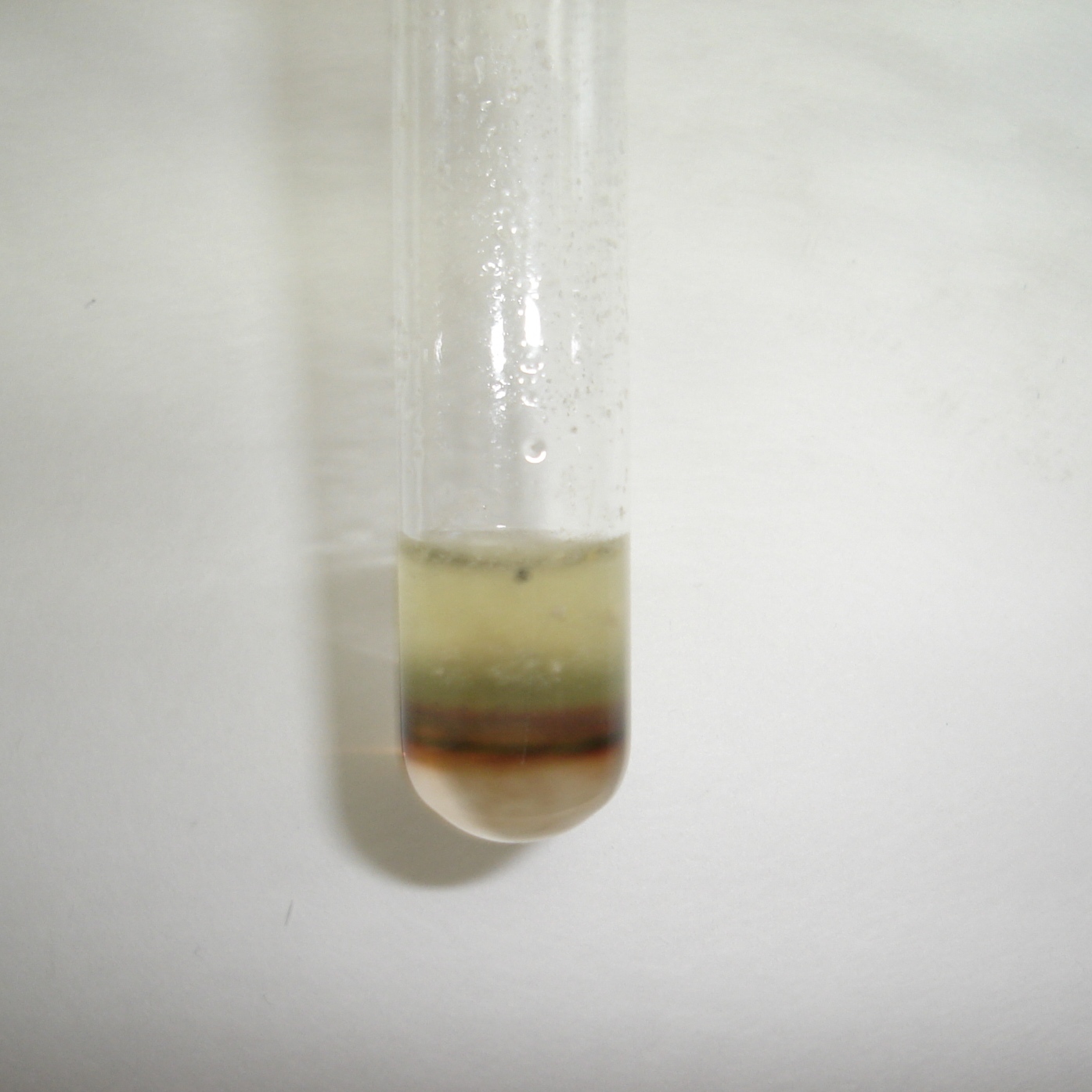Molisch's test on:
[Wikipedia]
[Google]
[Amazon]
 Molisch's test is a sensitive
Molisch's test is a sensitive
chemical test
In chemistry, a chemical test is a qualitative or quantitative procedure designed to identify, quantify, or characterise a chemical compound or chemical group.
Purposes
Chemical testing might have a variety of purposes, such as to:
* Determin ...
, named after Austrian botanist Hans Molisch, for the presence of carbohydrate
In organic chemistry, a carbohydrate () is a biomolecule consisting of carbon (C), hydrogen (H) and oxygen (O) atoms, usually with a hydrogen–oxygen atom ratio of 2:1 (as in water) and thus with the empirical formula (where ''m'' may or m ...
s, based on the dehydration of the carbohydrate by sulfuric acid or hydrochloric acid to produce an aldehyde, which condenses with two molecules of a phenol (usually α-naphthol, though other phenols such as resorcinol
Resorcinol (or resorcin) is an organic compound with the formula C6H4(OH)2. It is one of three isomeric benzenediols, the 1,3-isomer (or '' meta''-isomer). Resorcinol crystallizes from benzene as colorless needles that are readily soluble i ...
and thymol
Thymol (also known as 2-isopropyl-5-methylphenol, IPMP), , is a natural monoterpenoid phenol derivative of ''p''-Cymene, isomeric with carvacrol, found in oil of thyme, and extracted from ''Thymus vulgaris'' (common thyme), ajwain, and vari ...
also give colored products), resulting in a violet ring.
Procedure
The test solution is combined with a small amount of Molisch's reagent ( α-naphthol dissolved in ethanol) in atest tube
A test tube, also known as a culture tube or sample tube, is a common piece of laboratory glassware consisting of a finger-like length of glass or clear plastic tubing, open at the top and closed at the bottom.
Test tubes are usually placed in ...
. After mixing, a small amount of concentrated sulfuric acid is slowly added down the sides of the sloping test-tube, without mixing, to form a layer. A positive reaction is indicated by appearance of a purple red ring at the interface between the acid and test layers.
Reaction
All carbohydrates – monosaccharides,disaccharide
A disaccharide (also called a double sugar or ''biose'') is the sugar formed when two monosaccharides are joined by glycosidic linkage. Like monosaccharides, disaccharides are simple sugars soluble in water. Three common examples are sucrose, la ...
s, and polysaccharides (except triose
A triose is a monosaccharide, or simple sugar, containing three carbon atoms. There are only three possible trioses (including dihydroxyacetone): L-glyceraldehyde and D-glyceraldehyde, the two enantiomers of glyceraldehyde, which are aldotrios ...
s and tetrose A tetrose is a monosaccharide with 4 carbon atoms. They have either an aldehyde functional group in position 1 (aldotetroses) or a ketone functional group in position 2 (ketotetroses).
File:DErythrose Fischer.svg , D-Erythrose
File:DThreose Fisch ...
s)– should give a positive reaction, and nucleic acids and glycoproteins also give a positive reaction, as all these compounds are eventually hydrolyzed to monosaccharides by strong mineral acids. Pentose
In chemistry, a pentose is a monosaccharide (simple sugar) with five carbon atoms. The chemical formula of many pentoses is , and their molecular weight is 150.13 g/mol.furfural, while
hexose
In chemistry, a hexose is a monosaccharide (simple sugar) with six carbon atoms. The chemical formula for all hexoses is C6H12O6, and their molecular weight is 180.156 g/mol.
Hexoses exist in two forms, open-chain or cyclic, that easily convert ...
s are dehydrated to 5- hydroxymethylfurfural. Either of these aldehydes, if present, will condense with two molecules of α-naphthol to form a purple-colored product, as illustrated below by the example of glucose
Glucose is a simple sugar with the molecular formula . Glucose is overall the most abundant monosaccharide, a subcategory of carbohydrates. Glucose is mainly made by plants and most algae during photosynthesis from water and carbon dioxide, u ...
:
:
See also
* Rapid furfural testReferences
{{Analytical reagents Biochemistry detection methods